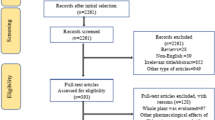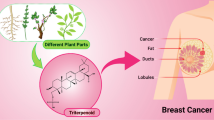Abstract
The sodium iodide symporter (NIS) mediates the active iodide uptake in the thyroid gland as well as lactating breast tissue. Recently, we reported significant stimulation of all-trans retinoic acid (atRA)-induced NIS expression in the estrogen-receptor positive human breast cancer cell line MCF-7 by dexamethasone (Dex) in vitro and in vivo, which might offer the potential to image and treat breast cancer with radioiodine. In this study, based on its known interaction with the pregnane-X-receptor (PXR) forming a heterodimer with the retinoid-X-receptor (RXR), we examined the effect of carbamazepine (CBZ), a potent activator of PXR, on atRA-induced NIS expression and therapeutic efficacy of 131I in MCF-7 cells. For this purpose, functional NIS expression in MCF-7 cells was examined by iodide uptake assay, quantitative real-time PCR as well as Western blot analysis, followed by investigation of 131I cytotoxicity in vitro after incubation with CBZ (4, 25, 100 μM) in the presence of atRA (1 μM) with or without Dex (100 nM). Incubation with CBZ stimulated atRA-induced iodide accumulation up to twofold in a concentration-dependent manner, while atRA/Dex-stimulated iodide uptake was further stimulated up to 1.5-fold by additional CBZ treatment based on significantly increased NIS mRNA and protein levels. This stimulatory effect of CBZ was shown to be dependent on the PI3K-Akt pathway without involvement of mTOR. In contrast, treatment with CBZ alone had no effect on functional NIS expression. Moreover, selective cytotoxicity of 131I was significantly increased from approximately 20% in MCF-7 cells treated with atRA alone to 50% after treatment with CBZ in the presence of atRA, which was further enhanced to 90% after combined treatment with atRA/Dex/CBZ. In conclusion, CBZ represents another potent stimulator of atRA-induced functional NIS expression resulting in an enhanced selective killing effect of 131I in MCF-7 breast cancer cells.






Similar content being viewed by others
References
Dohan O, De la Vieja A, Paroder V, Riedel C, Artani M, Reed M, Ginter CS, Carrasco N (2003) The sodium/iodide symporter (NIS): characterization, regulation, and medical significance. Endocrine Rev 24:48–77
Spitzweg C, Morris JC (2002) The sodium iodide symporter: its pathophysiological and therapeutic implications. Clin Endocrinol 57:559–574
Nicola JP, Basquin C, Portulano C, Reyna-Neyra A, Paroder M, Carrasco N (2009) The Na+/I- symporter mediates active iodide uptake in the intestine. Am J Physiol Cell Physiol 296:C654–C662
Tazebay UH, Wapnir IL, Levy O, Dohan O, Zuckier LS, Zhao QH, Deng HF, Amenta PS, Fineberg S, Pestell RG, Carrasco N (2000) The mammary gland iodide transporter is expressed during lactation and in breast cancer. Nat Med 6:871–878
Moon DH, Lee SJ, Park KY, Park KK, Ahn SH, Pai MS, Chang H, Lee HK, Ahn I-M (2001) Correlation between 99mTc-pertechnetate uptakes and expression of human sodium iodide symporter gene in breast tumor tissues. Nucl Med Biol 28:829–834
Renier C, Yao C, Goris M, Ghosh M, Katznelson L, Nowles K, Gambhir SS, Wapnir I (2009) Endogenous NIS expression in triple-negative breast cancers. Ann Surg Oncol 16:962–968
Rudnicka L, Sinczak A, Szybinski P, Huszno B, Stachura J (2003) Expression of the Na(+)/I(−) symporter in invasive ductal breast cancer. Folia Histochem Cytobiol 41:37–40
Wapnir IL, Goris M, Yudd A, Dohan O, Adelman D, Nowels K, Carrasco N (2004) The Na +/I− symporter mediates iodide uptake in breast cancer metastases and can be selectively down-regulated in the thyroid. Clin Cancer Res 10:4294–4302
Kogai T, Kanamoto Y, Che LH, Taki K, Moatamed F, Schultz JJ, Brent GA (2004) Systemic retinoic acid treatment induces sodium/iodide symporter expression and radioiodine uptake in mouse breast cancer models. Cancer Res 64:415–422
Kogai T, Kanamoto Y, Li AI, Che LH, Ohashi E, Taki K, Chandraratna RA, Saito T, Brent GA (2005) Differential regulation of sodium/iodide symporter gene expression by nuclear receptor ligands in MCF-7 breast cancer cells. Endocrinology 146:3059–3069
Kogai T, Schultz JJ, Johnson LS, Huang M, Brent GA (2000) Retinoic acid induces sodium/iodide symporter gene expression and radioiodide uptake in the MCF-7 breast cancer cell line. Proc Natl Acad Sci USA 97:8519–8524
Kogai T, Taki K, Brent GA (2006) Enhancement of sodium/iodide symporter expression in thyroid and breast cancer. Endocr Relat Cancer 13:797–826
Dohan O, De la Vieja A, Carrasco N (2006) Hydrocortisone and purinergic signaling stimulate NIS-mediated iodide transport in breast cancer cells. Mol Endocrinol 20:1121–1137
Unterholzner S, Willhauck MJ, Cengic N, Schutz M, Goke B, Morris JC, Spitzweg C (2006) Dexamethasone stimulation of retinoic acid-induced sodium iodide symporter expression and cytotoxicity of 131-I in breast cancer cells. J Clin Endocrinol Metab 91:69–78
Willhauck MJ, Sharif-Samani B, Senekowitsch-Schmidtke R, Wunderlich N, Goke B, Morris JC, Spitzweg C (2008) Functional sodium iodide symporter expression in breast cancer xenografts in vivo after systemic treatment with retinoic acid and dexamethasone. Breast Cancer Res Treat 109:263–272
Kogai T, Ohashi E, Jacobs MS, Sajid-Crockett S, Fisher ML, Kanamoto Y, Brent GA (2008) Retinoic acid stimulation of the sodium/iodide symporter in MCF-7 breast cancer cells is mediated by the insulin growth factor-I/phosphatidylinositol 3-kinase and p38 mitogen-activated protein kinase signaling pathways. J Clin Endocrinol Metab 93:1884–1892
Ohashi E, Kogai T, Kagechika H, Brent GA (2009) Activation of the PI3 kinase pathway by retinoic acid mediates sodium/iodide symporter induction and iodide transport in MCF-7 breast cancer cells. Cancer Res 69:3443–3450
Elstner E, Muller C, Koshizuka K, Williamson EA, Park D, Asou H, Shintaku P, Said JW, Heber D, Koeffler HP (1998) Ligands for peroxisome proliferator-activated receptor gamma and retinoic acid receptor inhibit growth and induce apoptosis of human breast cancer cells in vitro and in BNX mice. Proc Natl Acad Sci USA 95:8806–8811
Kliewer SA, Goodwin B, Willson TM (2002) The nuclear pregnane X receptor: a key regulator of xenobiotic metabolism. Endocr Rev 23:687–702
Tanosaki S, Ikezoe T, Heaney A, Said JW, Dan K, Akashi M, Koeffler HP (2003) Effect of ligands of nuclear hormone receptors on sodium/iodide symporter expression and activity in breast cancer cells. Breast Cancer Res Treat 79:335–345
Luo G, Cunningham M, Kim S, Burn T, Lin J, Sinz M, Hamilton G, Rizzo C, Jolley S, Gilbert D, Downey A, Mudra D, Graham R, Carroll K, Xie J, Madan A, Parkinson A, Christ D, Selling B, LeCluyse E, Gan LS (2002) CYP3A4 induction by drugs: correlation between a pregnane X receptor reporter gene assay and CYP3A4 expression in human hepatocytes. Drug Metab Dispos 30:795–804
Wilkinson GR (2005) Drug metabolism and variability among patients in drug response. N Engl J Med 352:2211–2221
Weiss SJ, Philip NJ, Grollmann EF (1984) Iodine transport in a continuous line of cultured cells from rat thyroid. Endocrinology 114:1090–1098
Castro MR, Bergert ER, Beito TG, Roche PC, Ziesmer SC, Jhiang SM, Goellner JR, Morris JC (1999) Monoclonal antibodies against the human sodium iodide symporter: utility for immunocytochemistry of thyroid cancer. J Endocrinol 163:495–504
Mandell RB, Mandell LZ, Link CJ (1999) Radioisotope concentrator gene therapy using the sodium/iodide symporter gene. Cancer Res 59:661–668
Brunn GJ, Williams J, Sabers C, Wiederrecht G, Lawrence JC Jr, Abraham RT (1996) Direct inhibition of the signaling functions of the mammalian target of rapamycin by the phosphoinositide 3-kinase inhibitors, wortmannin and LY294002. EMBO J 15:5256–5267
Brown-Grant K (1957) The iodide concentrating mechanism of the mammary gland. J Physiol 135:644–654
Knostman KA, Cho JY, Ryu KY, Lin X, McCubrey JA, Hla T, Liu CH, Di Carlo E, Keri R, Zhang M, Hwang DY, Kisseberth WC, Capen CC, Jhiang SM (2004) Signaling through 3′,5′-cyclic adenosine monophosphate and phosphoinositide-3 kinase induces sodium/iodide symporter expression in breast cancer. J Clin Endocrinol Metab 89:5196–5203
Conde I, Lobo MV, Zamora J, Perez J, Gonzalez FJ, Alba E, Fraile B, Paniagua R, Arenas MI (2008) Human pregnane X receptor is expressed in breast carcinomas, potential heterodimers formation between hPXR and RXR-alpha. BMC Cancer 8:174
Blumberg B, Evans RM (1998) Orphan nuclear receptors—new ligands and new possibilities. Genes Dev 12:3149–3155
Acknowledgments
The authors are grateful to John C. Morris, Division of Endocrinology Mayo Clinic and Medical School, Rochester, MN, USA for providing the NIS-specific antibody. This study was supported by grants from the Deutsche Forschungsgemeinschaft, Bonn, Germany (Sp 581/4-1, Sp 581/4-2 (DFG Forschergruppe FOR-411 ‘Radionuklidtherapie’), Sonderforschungsbereich SFB 824) and by a grant from the Wilhelm-Sander-Stiftung (2008.037.1) to C. Spitzweg.
Author information
Authors and Affiliations
Corresponding author
Rights and permissions
About this article
Cite this article
Willhauck, M.J., O`Kane, D.J., Wunderlich, N. et al. Stimulation of retinoic acid-induced functional sodium iodide symporter (NIS) expression and cytotoxicity of 131I by carbamazepine in breast cancer cells. Breast Cancer Res Treat 125, 377–386 (2011). https://doi.org/10.1007/s10549-010-0835-x
Received:
Accepted:
Published:
Issue Date:
DOI: https://doi.org/10.1007/s10549-010-0835-x




